The identity accompanies a pivot to online programming that brings 92NY’s offerings to more people in more places and more effectively than before.

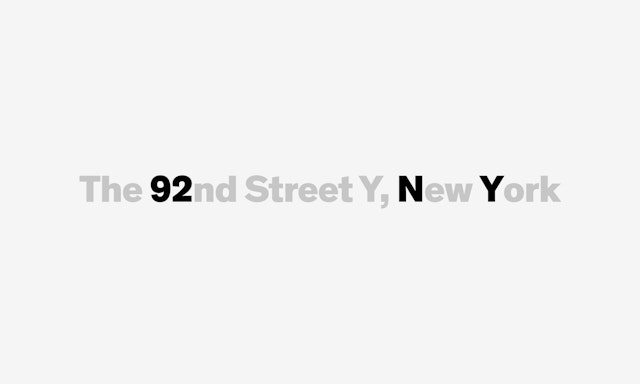

The identity pays tribute to NYC with a proprietary typeface, 92NY Didi, an elegant serif that nods to the typography of New York in the second half of the 20th century.
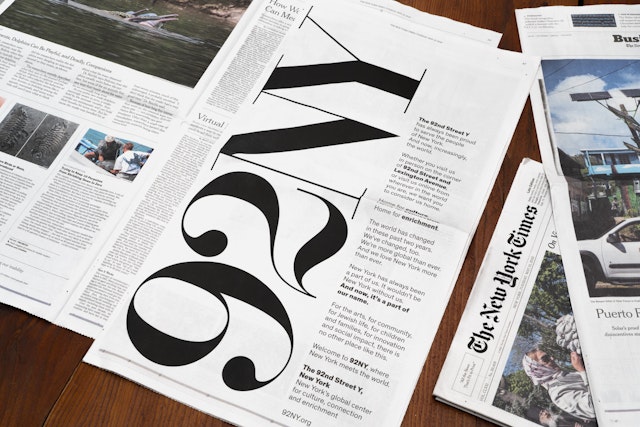
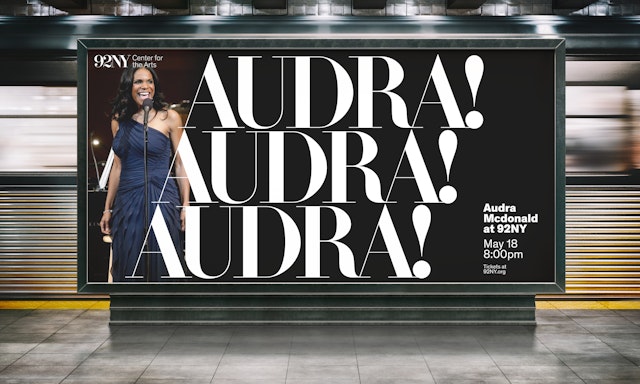

The versatility of the typeface makes it the perfect choice for 92NY, an institution with programming that is as broad-minded and eclectic as its audience.

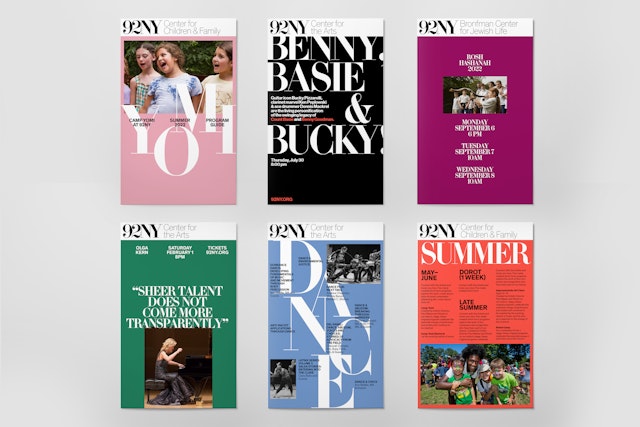


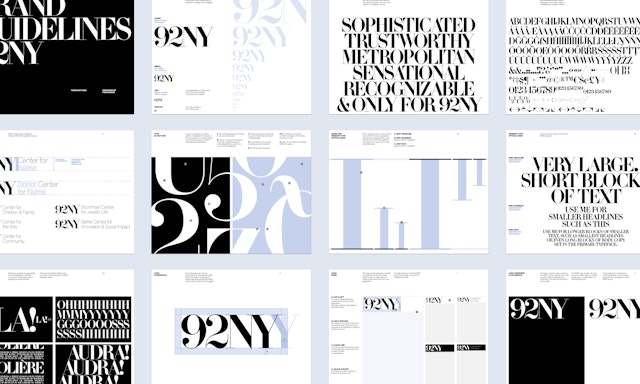


The 92nd Street Y in New York is a one-of-a-kind center for the arts and humanities that serves a community that extends from its local Manhattan neighborhood to all over the world. For over 150 years, the institution has welcomed and embraced people of all backgrounds and persuasions for a broad range of activities and events, from live concerts, talks and master classes with influential figures, to fitness classes, art courses, cooking lessons and parenting workshops. A pivot to online programming during the Covid-19 pandemic brought its offerings to more people in more places and more effectively than before, as viewers all over the world discovered it as a destination for vibrant content.
As part of this shift, Pentagram has developed a new visual identity and name for the organization—now officially known as The 92nd Street Y, New York—that positions it for a global audience by anchoring it in the city it calls home. The program includes a new logo and shortened name, 92NY, a custom typeface, and messaging that reintroduces the institution as “Where New York meets the world.”
Originally founded in 1874 as the Young Men’s Hebrew Association on West 21st Street, the organization has gone by many names and became known to New Yorkers as The 92nd Street Y after moving uptown in 1899. It has always presented a breadth of activities that has made it a challenge to describe, evolving over the years from a local neighborhood resource into a cultural institution that has hosted luminaries such as Truman Capote, Elie Wiesel, Martha Graham, Paul McCartney and Maya Angelou. The rebrand coincides with a $200 million revitalization of its historic building on the corner of East 92nd Street and Lexington Avenue.
92NY quickly moved its programming online during the lockdown in 2020, and has since amassed nearly 80 million streaming views for its on-demand archives, from all 50 states and more than 200 countries. (For comparison, it previously welcomed about 300,000 people per year through its doors for all of its programming.) This extraordinary response inspired the launch of Roundtable by The 92nd Street Y, New York, a new online platform for live, interactive courses, and prompted 92NY to fully embrace its reputation as a global center for culture, connection and enrichment.
To develop the identity, the Pentagram team first looked at how the institution presented itself to the world. This revealed the confusion behind the previous name and logo, which had also been designed by Pentagram: How exactly do you say it? (“92Y”? “Ninety-second Y?”) And having a “Y” in the name seems to link the organization to other well-known Ys, but what kind of Y hosts online classes, political debates, poetry readings and music recitals?
The solution was to keep the name, but reconnect this Y to its roots in the global capital: The 92nd Street Y, New York. The logo and shortened moniker come directly from the name, and incorporating the city helps give the “Y” a more obvious meaning. Messaging highlights the reasoning behind the change: “New York has always been part of us.”
The new identity pays tribute to NYC with a proprietary typeface, 92NY Didi, an elegant serif that nods to the typography of New York in the second half of the 20th century, when the city was consolidating its power as a center of communications and culture. Associated with everything from broadcasting and fashion to architecture and publishing, the provenance, refinement and versatility of this type made it the perfect choice for 92NY, an institution with programming that is as broad-minded and eclectic as its audience.
Pentagram worked with type designer Jeremy Mickel to create a new version of Didi suited to communications across print and digital, from small-scale mobile and social platforms to large posters and banners. Mickel drew from multiple sources, including the beloved 18th century Deberny & Peignot cut of Didot featured in Lettera 1 by Armin Haab and Alex Stocker (1954); CBS Didot, created for the television network in 1966 by Freeman Craw; and ITC Didi by Tom Carnese, commissioned by International Typeface Corporation in 1970. The new 92NY logo spotlights the typeface’s beautiful number set, with the curves of the 9 and 2 contrasting with the crisp verticals and diagonals of the “N” and “Y.”
The stylish logo is complemented by secondary typography set in the sans serif Theinhardt (from Optimo). The new identity establishes a consistent brand architecture across the organization’s five operating pillars, giving each its own sub-brand: the 92NY Center for Children & Family, the 92NY Center for the Arts & Culture, the 92NY Center for Community, the 92NY Bronfman Center for Jewish Life, and the 92NY Belfer Center for Innovation & Social Impact.
Client
The 92nd Street Y, New YorkSector
- Arts & Culture
- Civic & Public
Discipline
- Brand Identity
- Brand Strategy
Office
- New York
Partner
Project team
- Talia Cotton
- Tamara McKenna
- Gabriel Smoller
Collaborators
- Jeremy Mickel, type designer
